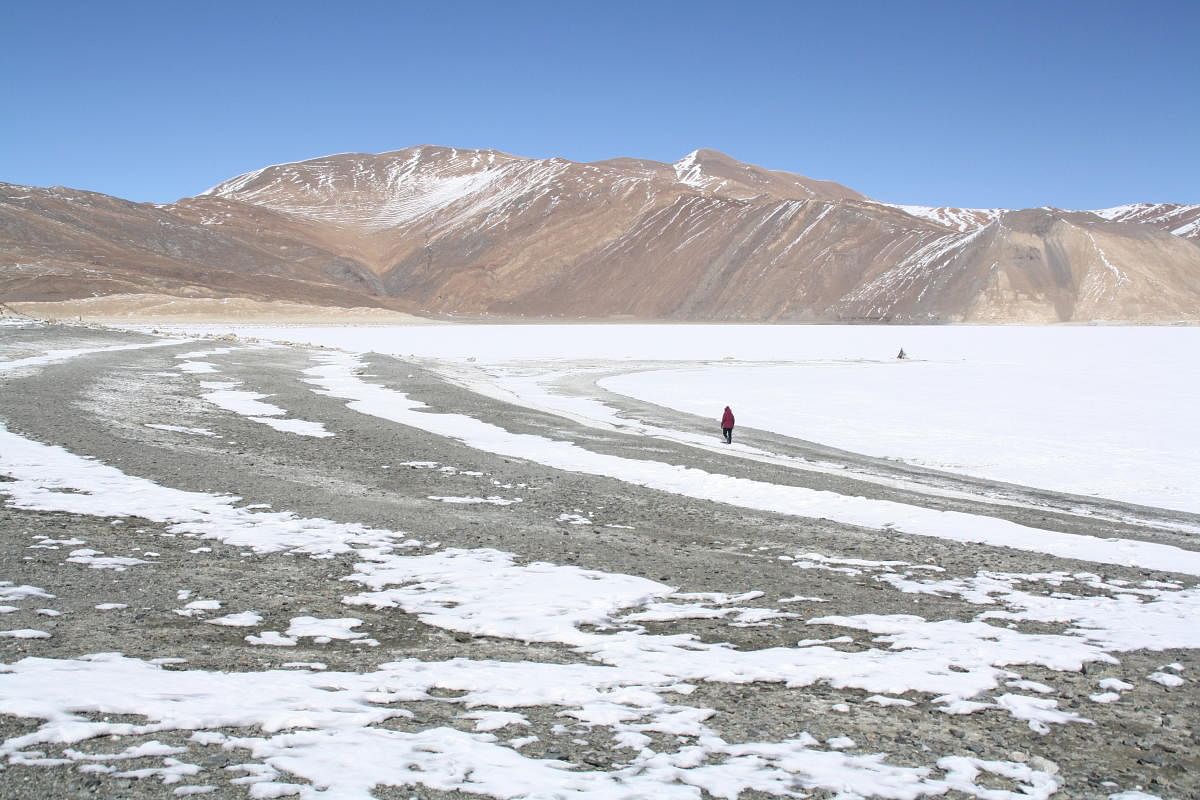
Flat sandbanks embrace Indus as it curves and disappears into the gorge. We sit around and let the evening light the barren landscape of Ladakh. My friend fiddles with a radio crackling with Radio Kashmir while the three of us continue to listen to the sound of the river jumping over stones.
He switches channels and we are listening to Radio Pakistan.
“Whoaaa..” he looks at both of us in wonder and tunes the device again only to get radio in an entirely foreign language.
“Is that Radio China?”
You get enough reminders that this is a border area — through the hilariously pithy Border Roads Organisation signs (Be gentle on my curves), the jokes Ladakhi kids make, the Army bunkers, the occasional Air Force planes going overhead and the check posts. Yet, it is difficult to orient yourself geographically in Ladakh when all you see is the sky bowing down to the majesty of these snow-flecked ochre mountains.
Among many a wonder this strange moonland has to offer, where the idyllic haze takes over the acute awareness of being at the border, is Pangong Tso (Tibetan for ‘enchanted lake’). Pangong lake is in Changthang plateau where the firoza stones Ladakhis wear on their perak (headdress) are found. The region is part of the Tibetan plateau with its dry grasslands, nomads who herd pashmina goats, the occasional appearances of Tibetan wild ass and the coy marmots. After our descent from the massive snow walls of Chang La pass, where the altitude is so high that birds glided past our car like an autorickshaw cutting ahead in traffic, Changthang plateau was an entrance to a rugged version of Grimms Fairytale.
Wild horses, yaks, and pashmina goats drink from melting snow streams meandering through the dry green grasslands. Small stone houses occasionally pass you by. And at the end of this five-hour-long drive from Leh is this endoheric saltwater lake — made famous by Bollywood blockbuster 3 Idiots — which straddles the India-China border. About 70% of the lake sprawls in China — a hard fact that snatches away pleasures of boating on the lake. In mid-March, we were greeted with a white sheet nestled between the red mountains instead of seven shades of blue that had become a part of the lake’s myth.
It is as if the saltwater itself is hibernating under the snow. However, a frozen Pangong Tso has other enchantments — a chance to walk on the lake or even better, make snow angels near the Line of Actual Control. When war broke out.. When Ladakh was ruled by kings from Namgyal line, there was a war between Tibet and Bhutan.
The then ruler, Delden Namgyal, supported Bhutan. Angered, the fifth Dalai Lama sent an army to attack Ladakh in the 1680s. Ladakhis were defeated at Chang La Pass and were chased down to Indus valley. The Ladakhi leaders and Army hid inside the famed Basgo Fort. The Tibetans confined them in the fort for three years.
Desperate, Delden Namgyal asked the Mughal rulers for help. Their help came with a price: that pashmina from Ladakh and Western Tibet be sold only to Kashmir and he must convert to Islam. After this, Delden Namgyal was known as Aqibat Mahmud Khan in Kashmir. Tibetans, upset with this development, sent a representative to meet the king and signed a treaty in 1684 with the present borders cutting through the Pangong Lake. The Ladakhis had to send tributes for Tibetan kings and monasteries every three years and Tibetans agreed to sell the pashmina. Ladakh was never truly independent after this. Subservient to both Kashmir and Tibet after this siege, the kings never tried to expand Ladakh’s borders. My friends started to make a snowman by the lake’s edge as I staggered around with my camera, listening to the fluttering of prayer flags, sounds of laughter, as my friends’ snowman-making exercise devolved into a snow fight, clicking pictures of this expanse of white contrasted starkly by the red mountains hemming the lake in.
Since it was off-season, there were only a few tourists apart from us, clicking pictures, and much to our amusement, asking their bewildered Ladakhi driver for the 3 Idiots point. It can be argued that the movie has brought a lot of tourists to an otherwise isolated region, but I ended up chuckling when my friend muttered under her breath, “Well I can see one idiot”. As we headed back to the school we were volunteering in, one of our students broke the spell: “Aap logon ne Pangong nahi dekha, aap ne barf dekha (you didn’t see Pangong, you saw snow).”